
Autumn, also known as fall in North American English, is one of the four temperate seasons. Autumn marks the transition from summer to winter, in September or March, when the duration of daylight becomes noticeably shorter and the temperature cools considerably. One of its main features in temperate climates is the shedding of leaves from deciduous trees.
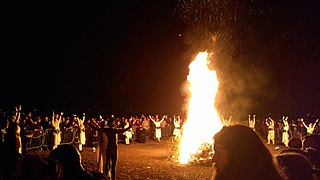
Beltane or Beltain is the Gaelic May Day festival. Most commonly it is held on 1 May, or about halfway between the spring equinox and the summer solstice. Historically, it was widely observed throughout Ireland, Scotland and the Isle of Man. In Irish the name for the festival day is Lá Bealtaine, in Scottish Gaelic Là Bealltainn and in Manx Gaelic Laa Boaltinn/Boaldyn. It is one of the four Gaelic seasonal festivals—along with Samhain, Imbolc and Lughnasadh—and is similar to the Welsh Calan Mai.
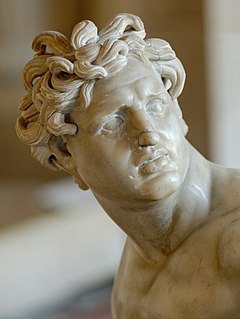
The Celts are a collection of overwhelmingly European peoples and nations that are believed to have originated in Central Europe before spreading across most of the continent and Galatia. European areas that retain Celtic culture and identity can be largely determined by their current use of the Celtic languages and other cultural similarities. The history of pre-Celtic Europe and the exact relationship between ethnic, linguistic and cultural factors in the Celtic world remains uncertain and controversial. The exact geographic spread of the ancient Celts is disputed; in particular, the ways in which the Iron Age inhabitants of Great Britain and Ireland should be regarded as Celts have become a subject of controversy. According to one theory, the common root of the Celtic languages, the Proto-Celtic language, arose in the Late Bronze Age Urnfield culture of Central Europe, which flourished from around 1200 BC.

Halloween or Hallowe'en, also known as Allhalloween, All Hallows' Eve, or All Saints' Eve, is a celebration observed in many countries on 31 October, the eve of the Western Christian feast of All Hallows' Day. It begins the three-day observance of Allhallowtide, the time in the liturgical year dedicated to remembering the dead, including saints (hallows), martyrs, and all the faithful departed.
Imbolc or Imbolg, also called (Saint) Brigid's Day, is a Gaelic traditional festival marking the beginning of spring. It is held on 1 February, or about halfway between the winter solstice and the spring equinox. Historically, it was widely observed throughout Ireland, Scotland and the Isle of Man. It is one of the four Gaelic seasonal festivals—along with Beltane, Lughnasadh and Samhain. For Christians, especially in Ireland, it is the feast day of Saint Brigid.
Samhain is a Gaelic festival marking the end of the harvest season and the beginning of winter or the "darker half" of the year. Traditionally, it is celebrated from 31 October to 1 November, as the Celtic day began and ended at sunset. This is about halfway between the autumn equinox and the winter solstice. It is one of the four Gaelic seasonal festivals, along with Imbolc, Bealtaine and Lughnasadh. Historically, it was widely observed throughout Ireland, Scotland and the Isle of Man. Similar festivals are held at the same time of year in other Celtic lands, for example the Brittonic Calan Gaeaf, Kalan Gwav, and Kalan Goañv.

The Tuath(a) Dé Danann, also known by the earlier name Tuath Dé, are a supernatural race in Irish mythology. They are thought to represent the main deities of pre-Christian Gaelic Ireland. The Tuatha Dé Danann constitute a pantheon whose attributes appeared in a number of forms throughout the Celtic world.
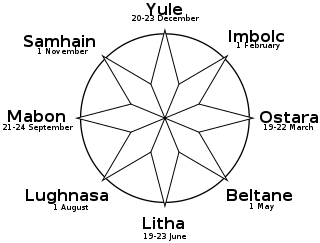
The Wheel of the Year is an annual cycle of seasonal festivals, observed by many modern Pagans, consisting of the year's chief solar events and the midpoints between them. While names for each festival vary among diverse pagan traditions, syncretic treatments often refer to the four solar events as "quarter days" and the four midpoint events as "cross-quarter days", particularly in Wicca. Differing sects of modern Paganism also vary regarding the precise timing of each celebration, based on distinctions such as lunar phase and geographic hemisphere.

Lughnasadh or Lughnasa is a Gaelic festival marking the beginning of the harvest season. Historically, it was widely observed throughout Ireland, Scotland and the Isle of Man. In Modern Irish it is called Lúnasa, in Scottish Gaelic: Lùnastal, and in Manx: Luanistyn. Traditionally it is held on 1 August, or about halfway between the summer solstice and autumn equinox. However, in recent centuries some of the celebrations shifted to the Sundays nearest this date. Lughnasadh is one of the four Gaelic seasonal festivals, along with Samhain, Imbolc and Beltane. It corresponds to other European harvest festivals such as the Welsh Gŵyl Awst and the English Lammas.

Brigit, Brigid or Bríg is a goddess of pre-Christian Ireland. She appears in Irish mythology as a member of the Tuatha Dé Danann, the daughter of the Dagda and wife of Bres, with whom she had a son named Ruadán. She is associated with the spring season, fertility, healing, poetry and smithcraft. Cormac's Glossary, written in the 10th century by Christian monks, says that Brigid was "the goddess whom poets adored" and that she had two sisters: Brigid the healer and Brigid the smith. This suggests she may have been a triple deity.
The Celtic calendar is a compilation of pre-Christian Celtic systems of timekeeping, including the Gaulish Coligny calendar, used by Celtic countries to define the beginning and length of the day, the week, the month, the seasons, quarter days, and festivals.
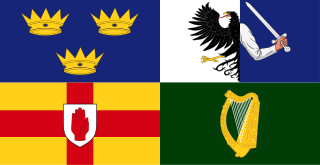
The culture of Ireland includes language, literature, music, art, folklore, cuisine, and sport associated with Ireland and the Irish people. For most of its recorded history, Irish culture has been primarily Gaelic. It has also been influenced by Anglo-Norman, English and Scottish culture. The Anglo-Normans invaded Ireland in the 12th century, and the 16th/17th century conquest and colonisation of Ireland saw the emergence of the Anglo-Irish and Scots-Irish.

The modern Celts are a related group of ethnicities who share similar Celtic languages, cultures and artistic histories, and who live in or descend from one of the regions on the western extremities of Europe populated by the Celts.

Celtic Reconstructionist Paganism is a polytheistic reconstructionist approach to Celtic neopaganism, emphasising historical accuracy over eclecticism such as is found in many forms of Neo-druidism. It is an effort to reconstruct and revive, in a modern Celtic cultural context, pre-Christian Celtic religions.

Ancient Celtic religion, commonly known as Celtic paganism, comprises the religious beliefs and practices adhered to by the Iron Age people of Western Europe now known as the Celts, roughly between 500 BCE and 500 CE, spanning the La Tène period and the Roman era, and in the case of the Insular Celts the British and Irish Iron Age. Very little is known with any certainty about the subject, and apart from documented names that are thought to be of deities, the only detailed contemporary accounts are by hostile and probably not-well-informed Roman writers.
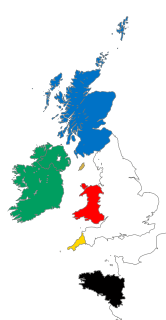
The Celtic nations is a cultural region and collection of geographical territories in Western Europe and the North Atlantic where Celtic languages and/or cultural traits have survived. The term "nation" is used in its original sense to mean a people who share a common identity and culture and are identified with a traditional territory.
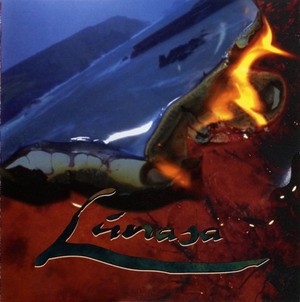
Lúnasa is an album by Lúnasa that was released twice, first in 1998 on their own label, and again in 2001 on Compass Records. It was the band's first major release. The piping on the album was done by John McSherry, as Cillian Vallely was not part of the group at the time.
The various names used since classical times for the people known today as the Celts are of disparate origins.

The Gaels are an ethnolinguistic group native to Ireland, Scotland and the Isle of Man in northwestern Europe. They are associated with the Gaelic languages: a branch of the Celtic languages comprising Irish, Manx and Scottish Gaelic. Historically, the ethnonyms Irish and Scots referred to the Gaels in general, but the scope of those ethnicities and nationalities is today more complex.
Common Brittonic was an ancient Celtic language spoken in Britain. It is also variously known as Old Brittonic, British, and Common or Old Brythonic. By the sixth century AD, this language of the Celtic Britons was starting to split into the various Neo-Brittonic languages: Welsh, Cumbric, Cornish, Breton and probably the Pictish language.














